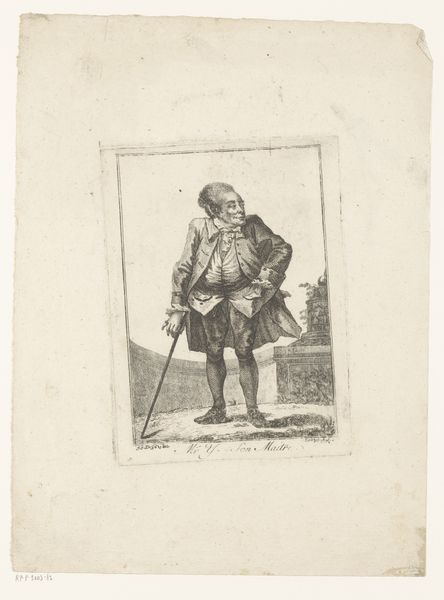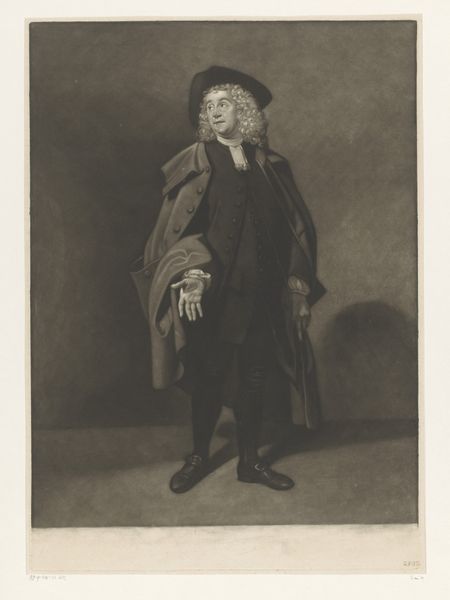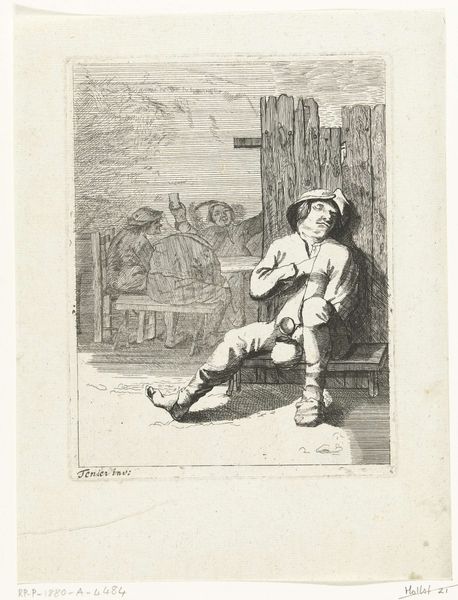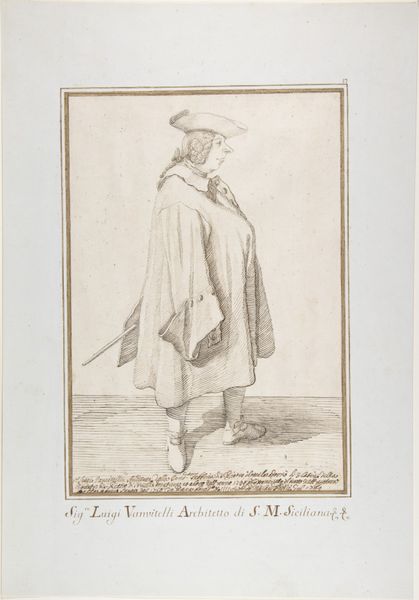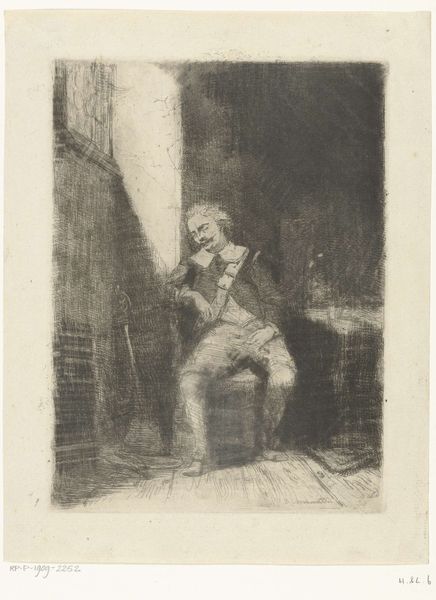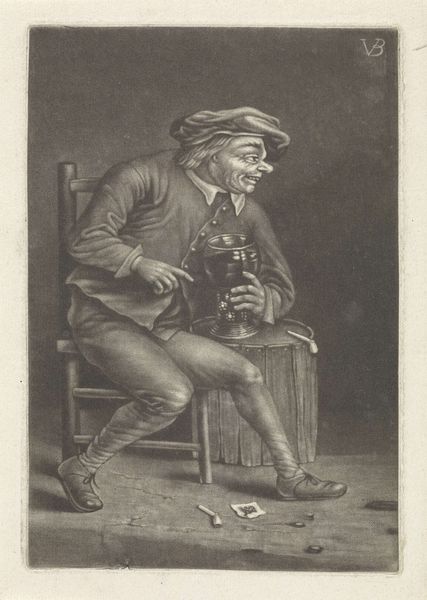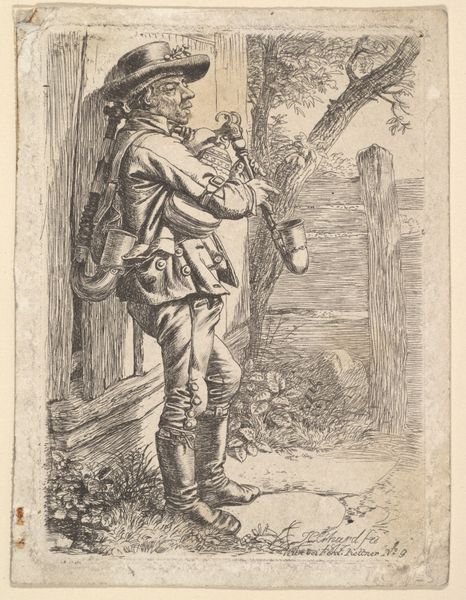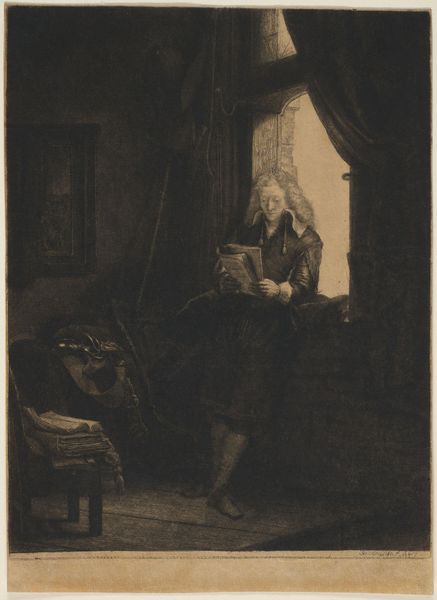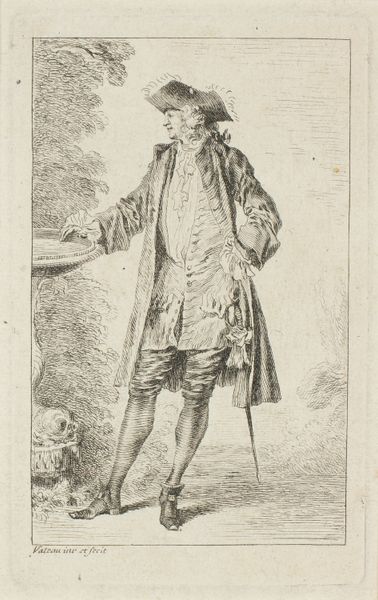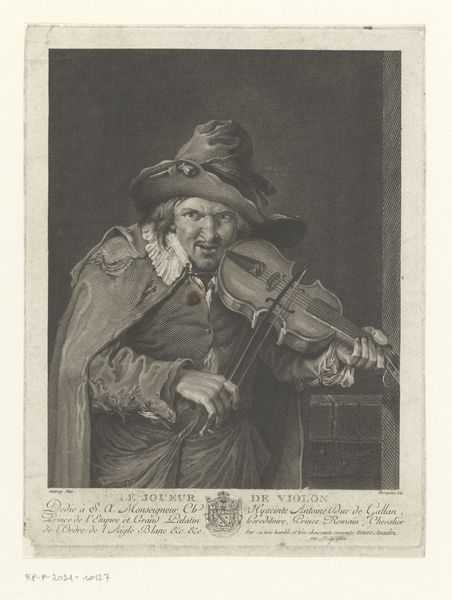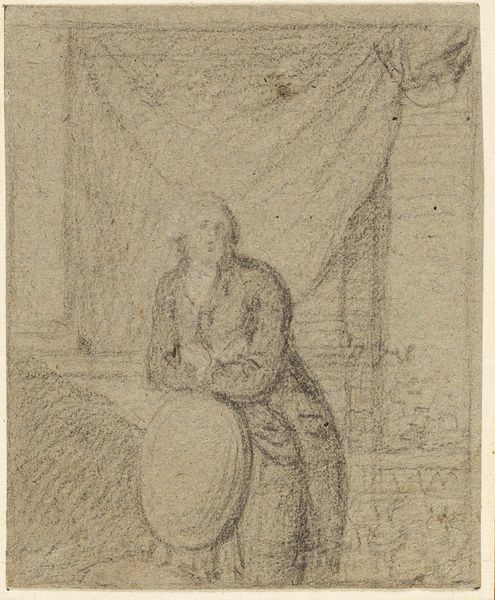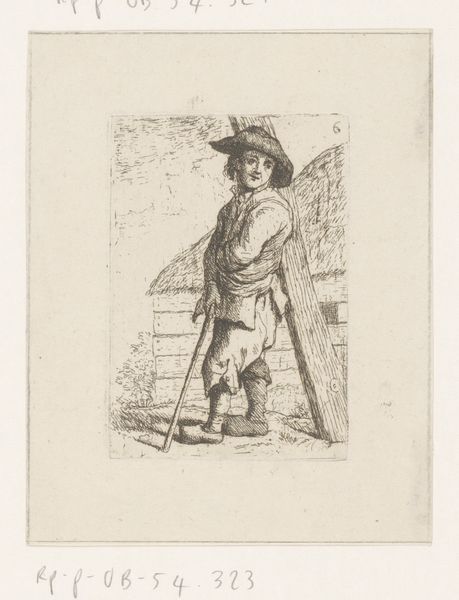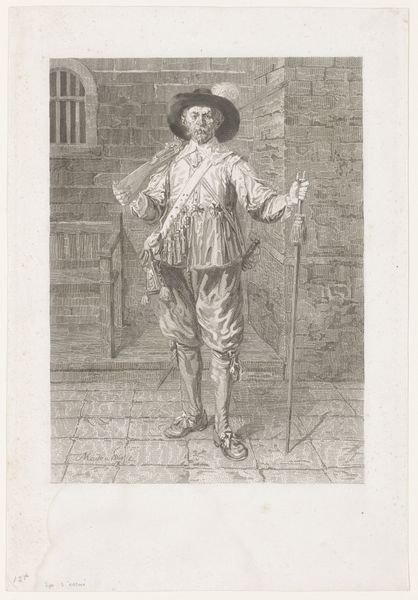
drawing, ink, pen, charcoal
#
portrait
#
drawing
#
baroque
#
pencil sketch
#
charcoal drawing
#
ink
#
pencil drawing
#
pen
#
genre-painting
#
charcoal
#
academic-art
Dimensions: height 325 mm, width 238 mm
Copyright: Rijks Museum: Open Domain
Curator: Here we have a drawing from between 1750 and 1770 by Jacobus Buys, currently residing at the Rijksmuseum. The artwork, executed with pen, ink, charcoal, and pencil, is titled "The Actor A. Spatzier in the Role of Warenar". What are your first thoughts on this piece? Editor: My initial impression is one of contained anxiety. There's something about the way he clutches that pot – almost protective – that hints at hidden fear or worry. Curator: That’s an interesting observation. The image portrays actor A. Spatzier embodying the character of Warenar, a role derived from Plautus’s play "Aulularia," which tells the story of a miser. What is intriguing is the construction of persona – in an era where theater occupied a significant role in public life. How did representation on stage reflect societal concerns or reinforce existing beliefs? Editor: Yes, I'm drawn to how the visual language embodies the trope of the miser. Note the shadowed face, the way the cloak conceals rather than reveals, all classic symbols suggesting secrecy and hidden depths. The pot he is holding becomes a direct representation of his inner, emotional life. Curator: Exactly! Theater then wasn't just entertainment, it was a platform for moral and social commentary. Visual depictions such as this drawing then would function to disseminate such commentary, creating an interplay between the theatrical event and everyday civic life. The shovel adds another layer; perhaps a suggestion of labour but perhaps of literally digging oneself a hole of isolation. Editor: The very composition reinforces this, doesn't it? The shadowy figure lurking behind the wall; the architectural structure and implement; are the implements defensive? Or evidence of wrongdoing. These aren’t just details, but symbolic cues prompting questions about hidden wealth and social alienation. Curator: It makes you consider the function of theater then. It reflected moral questions back to its audiences, reminding them of societal norms and their potential pitfalls through recognizable characters and situations, it functioned almost as public service. Editor: Considering this now, it gives me a richer appreciation of not just the artistic skill, but how even a simple sketch carries such complex cultural weight. Curator: Indeed; considering this single character, rendered in ink and charcoal, we see reflected complex themes about wealth, anxiety, performance, and society that resonates even now.
Comments
No comments
Be the first to comment and join the conversation on the ultimate creative platform.
